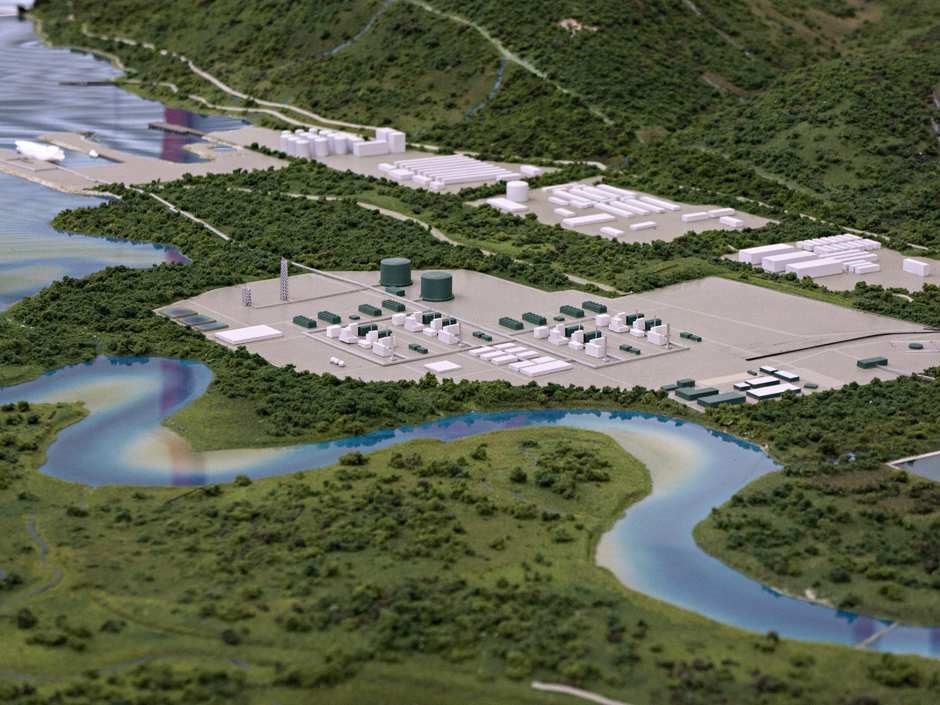Employment will accelerate in B.C.'s north over the next couple of years, with construction of liquefied natural gas infrastructure and pipelines fuelling a boom in jobs and residential and commercial construction, according to the B.C. Regional Economic Outlook report.
Meanwhile, employment growth in Metro Vancouver and southwestern B.C. is predicted to slow to just over one per cent in 2019 and 2020, as labour shortages and a tight housing market continue to be friction points for businesses and workers, respectively.
Overall, economic growth is expected to fall to between 2.5 and three per cent from 3.8 per cent in 2017.
Total employment will spike on the North Coast in 2020, with the construction of the $40-billion LNG Canada export terminal at Kitimat and the 700-kilometre TransCanada Coastal GasLink from Dawson Creek, said Bryan Yu, Central 1 Credit Union's deputy chief economist. Terminal construction will require up to 7,500 workers at its peak.
"We expect that boom to last until the plant is complete in 2023," he said. "There will be impacts on housing and jobs along the length of the pipeline, too."
Related investment will boost non-residential building permits on the North Coast by about 1,000 per cent by 2020 over the value of permits in 2017, according to Central 1's new B.C. Regional Economic Outlook report.
The northeast will also benefit from job growth, but in about two to three years' time when gas drilling and extraction ramp-up to service the Kitimat plant and pipeline. The LNG terminal announcement has already caused ripples in the local real estate market, including an attempted $1,000-a-month rent increase and a flurry of home-buying, mainly by outside investors, said Kitimat Mayor Phil Germuth.
"That (home-buying spree) caught everybody by surprise, no one expected that frenzy, including the realtors," he said.
To ease the impact of LNG construction on Kitimat's real estate market, LNG Canada has contracted the oilpatch housing firm Civeo to install enough modular buildings for 4,500 workers, he said. Civeo will operate a second permanent camp in Kitimat for 440 workers, and Horizon North will build a temporary camp just outside of town to house another 1,000.
Site preparation at the terminal, camp construction and a new road have already brought considerable benefit to the town of 8,300, said Germuth.
"I can see us being busy here for the next 10 years," he said. "Once LNG Canada is ramping down, we hope Chevron's LNG will be ramping up."
The Lower Mainland will continue to suffer labour shortages in part due to high housing costs, the report says. Government interventions aimed at cooling the real estate market will lead to modest price reductions in southwestern B.C., but also -- unhelpfully -- a drop in residential building permits.
"We've seen sales slow dramatically as a result of the new federal lending criteria, among other things, but that's a bit of an outlier" said Yu. "Industries like technology, TV and film and tourism are all doing quite well."
Indeed.ca lists more than 38,000 job vacancies in the Vancouver area.
"The labour market will continue to be very tight," he said.
While job growth is expected to be modest on Vancouver Island, a steady in-flow of retirees from across Canada and young families priced out of Metro will push the median price of a home to nearly $500,000 in 2020, the report says.
"People have been priced out of Vancouver for a number of years and they are looking elsewhere, like Victoria, Nanaimo and Campbell River, where they can find work or set up their own remote working environment," said Yu.
The housing market in B.C.'s southern Interior, the Okanagan and the Kootenays is expected to remain flat as a result of tighter mortgage rules, the effect of B.C.'s speculation tax and general weakness in Alberta's economy, which affects local oilpatch workers, tourism and the market for recreational properties.
"Residential transactions will decline in 2018 by 13 per cent in the Kelowna (area) and by 11 per cent in (the Thompson Okanagan) overall," the report said.



